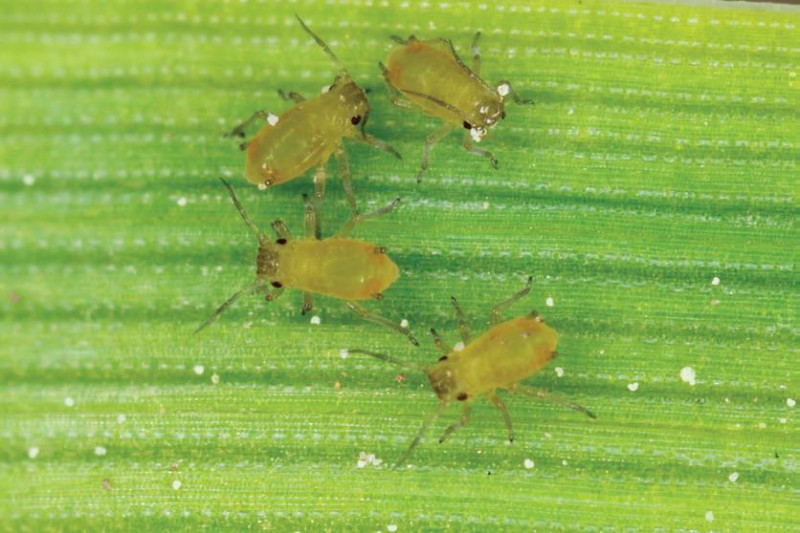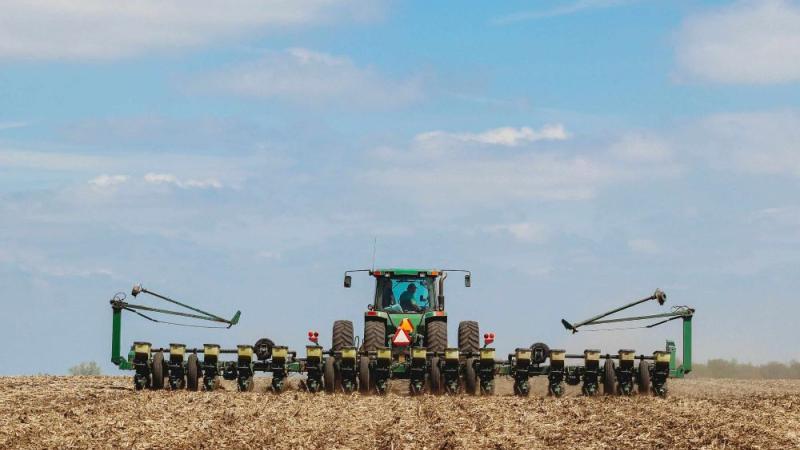The Effect Aphids Can Have on Corn Yield
Eric Solberg, Eastern Region Product Agronomist
August 26, 2019


While walking in corn fields this past week I noticed the corn aphid population has dramatically increased. A few weeks ago it was hard to find any corn aphids, but now they are making walking corn very uncomfortable. This particular corn field was in West Central Iowa and was treated with fungicide and insecticide two weeks prior.
Corn aphids are becoming a common pest for corn growers and have the potential to develop into massive populations. Aphids can be found throughout the corn-growing season, but post-pollination corn aphids are a relatively new issue. It’s important to understand the damage aphids can cause to determine if management is necessary.
Here are a few facts you should know about corn aphids:
- Aphids feed on the sap from the plant phloem and excrete sugar-rich honeydew that covers the plant, which can interrupt both plant growth and pollination. Aphids colonize deep within the whorl. Excessive feeding within the whorl before tassel emergence leads to incomplete kernel development or barren ears.
- Aphids are problematic during tasseling and can colonize corn later in the summer, threatening yield potential. Drought-stressed corn plants also can be sensitive to aphid feeding.
- Beneficial insects, such as ladybugs, can help control aphids.
- In extreme cases, aphids are associated with dying leaves or, rarely, the death of entire plants. Sooty molds can colonize these sugary leaf surfaces, further reducing leaf photosynthesis.
- Aphids can, and often do, leave corn as it begins to mature to dough stage. If subsequent rainfall washes off the sooty mold, honeydew and cast skins, the only evidence of the infestation may be small discolored areas on the leaf sheath and shanks.
Management Tips:
- Spot damage: Heavily infested plants are discolored and stunted with wilted, curled or yellowed leaves and sometimes shriveled ears.
- Scout: Start scouting three weeks before tasseling. Check five locations within the field and 20 plants at each location. Examine the ear, leaves and stalk.
- Control before tassel emergence: Protect yield by controlling aphids two to three weeks before tassels emerge. Treat plants if 50 percent are infested with colonies of over 75 aphids per plant.
- Manage late-season: Treat if more that 50 percent of the tassels are covered with aphids and their honeydew, before pollination is halfway complete.
- Historically, little attention has been paid to the late-milk stage bird-cherry oat populations.
Summary:
- Aphid infestation can lead to significant yield loss in corn.
- Aphids can populate quickly and cause extensive damage.
- Post-pollination aphids rarely cause significant yield loss.
- Scout and treat fields before tasseling to prevent costly damage.

